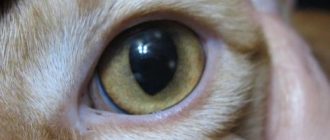Fear of an allergic reaction to cats makes many people refuse to purchase a furry pet, sometimes even in those cases when the symptoms of the disease have never been. Television commercials, acquaintances’ stories can often scare potential purchaser of the cat that he will refuse to purchase and others will be advised not to get animals. Is it so scary Allergy and its serious consequences? Let us consider the reasons in more detail. allergies to cats and human condition during exacerbations of the disease.
Causes of Allergies to Cats
Contents
Often people believe that the cat’s hair is an allergen, but actually allergy is caused by a protein that is in saliva and animal urine. Protein settles just on the hair and dead cells skin, which are common throughout the living space where the cat lives. In people with a particular sensitivity of the immune system to this type of allergen, there are various unpleasant symptoms, disturbing and interfering with normal coexistence with beloved animals. Allergy – Chronic Hereditary a disease that cannot be cured, but often quite real keep under control, following the instructions of a competent allergist. By the way, often an allergic person has a reaction only to some cats, while others do not disturb human the body.
Symptoms of Cat Allergy
According to its symptoms, allergy to cats differs little from reactions to plant pollen, food (honey, nuts, citrus fruits and much other), insect bites and a huge number of different allergens, waiting for a person every day at every step. One of the rarest and most complex effects of allergies to cats is anaphylactic shock – hypersensitivity of the immune system to allergen, during which the victim has a sharp pressure drop, edema, difficulty breathing, hypoxia. Given the disease can be fatal in the absence of taking measures to save the patient. Pets can be and indirectly “guilty” of the appearance of such a reaction – anaphylactic shock may be caused by an allergy to helminths, blood-sucking parasites, if no measures have been taken to destroy them. But most often allergies does not carry such serious complications and is manifested by such symptoms:
- Swelling of the nasal mucosa, itching, runny nose (rhinitis);
- Redness of the eyes, lacrimation (allergic conjunctivitis);
- Difficulty breathing, shortness of breath;
- Skin rashes, redness of the skin (allergic dermatitis);
- Dizziness, headache;
- Inhibition of the cardiovascular system.
In fact, most often people only have lacrimation, itching sinuses and eyes, but the symptoms are individual. If there is a risk the development of complications from the respiratory or cardiac systems, the owner should say goodbye to the dream of having a cat. In the rest compromises are possible, when health is not strong limp, and the pet will be there.
Allergy Diagnosis
Often a cat owner or other family members may be mistaken, assuming that it is the cat that is the source of the allergy. The disease can be triggered by completely different sources. allergens: drugs, chemicals, food, dust. And since reveal self allergen is very difficult, should consult allergist, who in clinical conditions will help the patient identify an allergen that causes unpleasant symptoms. For compiling a complete picture of the disease, the patient must tell the doctor about all manifestations of the disease. Based on the story, the doctor may suggest such allergen detection methods:
- Prik testing (introduction under the skin of a suspected allergen) and scarification test (application of various drops on the skin allergens). The essence of these methods is that through a certain the skin at the injection or drop site should turn red, swelling will appear, which will help determine the source of the allergy;
- Venous blood donation for analysis to determine the allergen;
- The provocative method (introduction to the sinuses, under the tongue or in upper respiratory tract allergen that is suspected source of disease).
In fact, the safest (you can detect allergies even in young children) are prik testing and scarification for diagnosis.
Cat Allergy Treatment
Probably the most reasonable thing would be to advise a person suffering from allergies to cats refuse to communicate with the animal, giving it to good hands. In some cases, such an act is justified, because far from always even correctly selected drugs can overcome all the negative effects of allergies on health and quality of life. But you can’t always attach a cat somewhere, and give a friend is sometimes very hard. The decision is up to the owner of the cat – keep the animal at home or look for a new home for it. allergies to cats should be picked up by a doctor, not independently, when a suffering person acquires funds, which do not suit him. Most often, an allergist prescribes:
- Antihistamines (tablets, drops and ointments) that are on allergens are neutralized for some time;
- Immunomodulators to strengthen the body and increase resilience;
- Means that prevent swelling of the mucous membranes;
- Symptomatic preparations (various drops in case of congestion nose, with rhinitis, with conjunctivitis, etc.).
Allergy Prevention
Contact with cats should be avoided if allergic. occurs specifically on cat protein, which spreads everywhere due to hair and pieces of skin. The owner should definitely wash hands, face after contact with a cat. The room where the cat lives must be thoroughly cleaned – it is necessary to vacuum, mop several times a week, and also air the rooms. Thick carpets that not only contain a huge amount of wool cats, but also dust, and a lot of things still worth removing. Upholstery furniture is better to prefer leather (or leatherette) – it is easier wipe. An allergic person should strengthen his body so that he has strength to fight the disease: give up bad habits, breathe fresh air, eat quality and wholesome foods, Go in for sports and monitor personal hygiene.
With regards to cats, here you can do the following procedures:
- Bathing the animal with special shampoos, regular combing out;
- If possible, the cat should be sterilized (such individuals secrete a small amount of protein);
- Deworming and getting rid of fleas, whipworms (cats whose the body is affected by parasites, more dangerous for humans);
- Determination for the period of exacerbation of a cat’s disease to friends (to relatives, etc.);
- Distribution of responsibilities for caring for a cat (combing, cleaning the tray, etc.) for households not affected by allergies – if it is possible.






